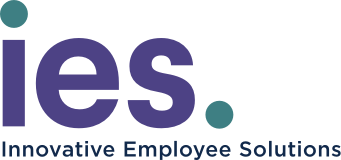Since the onset of the COVID-19 pandemic and its subsequent lockdown orders, millions of jobs have become at least partially remote. From 2021 to 2022, in fact, the number of employees who chose to work remotely rose by 24%. What’s more, more than 60% of companies implemented some form of flexible work. Because work-from-home jobs often permit a better work-life balance, an escape from daily commutes, and the chance to work from almost anywhere in the world, it has become the preferred work arrangement for nearly half of U.S. workers.
Despite the widespread embrace of remote work, there are several remote workforce challenges that businesses should be aware of — especially as they relate to taxes. As remote work pushes the gig economy to expand, contingent workers will become more commonplace and require staffing teams and HR departments to sort through the complexities associated with their positions.
To add to the complexity, a remote work trend in 2023 is the “human cloud,” a collective term for digital business marketplaces, such as Upwork, Fiverr, and PeoplePerHour, that facilitate work arrangements for millions of skilled professionals, clients, and companies. The proliferation of these marketplaces has already begun to affect taxation.
By causing the employee-employer relationship to evolve, these trends have changed the way taxes are paid, which has become a significant challenge for modern companies.
Why Remote Work Can Make Taxes Complicated
Remote work tax implications become even more pronounced for companies that contract workers in different states. Employers who previously only had a presence in a single state might not be familiar with tax withholding requirements for remote workers. Some states may have reciprocal agreements for tax withholding, but this is often because they neighbor each other. For this reason, when you have employees working remotely in another state, taxes can be complicated.
Each state’s revenue department usually establishes tax withholding requirements. In most cases, legislation requires tax withholding in the state where the work is performed. This may affect the employer’s other obligations, such as workers’ compensation, benefits, and unemployment insurance. To ensure that these obligations comply with local laws and regulations, HR departments need to have in-depth knowledge about the states in which they do business.
Moreover, employers must register for state withholding taxes and unemployment insurance in states where they hire remote workers or allow existing employees to relocate. Employers with an existing presence in multiple states might have procedures in place for remote work. Those who don’t should consult a tax advisor. Companies that allow employees to work remotely in different states may create nexus, making them subject to taxation in those states.
Most states tax income where work is physically performed. Employees should always check in with their employers to ensure their personnel files are current. If they fail to withhold taxes in the state they’ve moved to, they may get a surprise bill during tax season. These extra fees are especially relevant if an employee has officially and permanently taken up residence in that new state. They may be subject to penalties and interest for under-withholding during the year.
Similarly, applying for unemployment benefits in a new state can result in additional problems. If employers are unaware of their employees’ moves, they could fail to file unemployment reports in the correct state, resulting in a hefty fine. Many workers aren’t even aware that they could end up paying taxes in two separate states during a year when they’ve made a cross-country move. The choice of state also affects taxes. California, for example, has become infamous for the complexity of its tax laws.
How to Make Remote Work Taxes Easier to Manage
Despite the challenges of managing variable tax expectations, there are a few strategies to help make the situation easier. Here are three ways that employers can minimize their tax headaches:
Do research
Don’t leave tax questions until the last minute. Employers should always review the implications of remote work for their companies in particular. If necessary, they should speak to an experienced tax advisor.
Develop clear policies
A solid action plan is the best way to stay on top of a challenging situation. So, employers must create internal processes and policies for remote work. They should also ensure that the proper tax registrations are in place before establishing remote work options.
Embrace transparency
In addition to minimizing the spread of poorly sourced information, transparency ensures that everyone is aware of current tax policies and procedures. Employers should communicate their remote work policies to all employees and check that everyone understands their responsibilities when they request remote work arrangements.
Our team at Innovative Employee Solutions has extensive experience hiring, onboarding, and payrolling workers internationally and throughout the United States. Many clients have turned to IES to manage their remote and contingent workforce populations. At IES, we have the ability and expertise to act as the employer of record and ensure that our clients remain compliant with tax withholding and reporting requirements.
Written by: Alex Gomez, Controller, Payroll & Billing
Alex Gomez is the controller and employment tax expert of Innovative Employee Solutions (IES), a leading provider of remote and contingent workforce solutions, specializing in global Employer of Record, Agent of Record, and Independent Contractor compliance services in 150+ countries. Founded in 1974, IES is a woman-owned business, certified by the WBENC, and partners with companies to provide compliant employment solutions that empower people’s lives.







